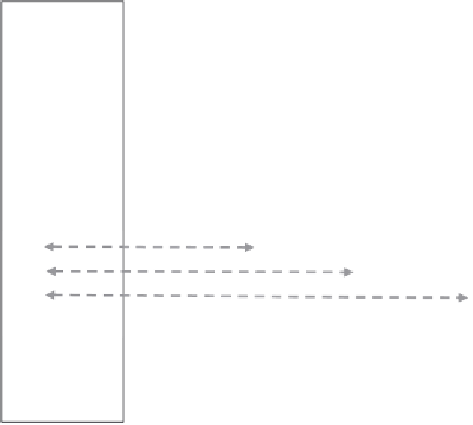Biomedical Engineering Reference
In-Depth Information
Need
Customer
Secure
web-based
information
warehouse
Develop specification
Conceptual design
Initial embodiment
Detailed design
Casing team
Power pack
team
Chuck team
Drive unit
team
Implementation
Figure 3.18
Collaborative design model.
develop without the need for specialist software. Note that this is the first model that formally
brings the customer into the overall design process. Because access to data is now easier, it is
inherently easier to give the customer access to ideas. In practice, this is often limited to the
specification stage - after all we wouldn't want to teach our customers all of our tricks of the
trade. However, this helps us to develop a good, robust specification and it makes it easier for
the PDS to evolve as the project develops.
Communication is now between the data store and the teams. This communication can
be
asynchronous
or
synchronous
. An example of synchronous communication would be
one team in London working on one aspect of the design, and a second team in Oxford
working on another aspect (a good example is a printed circuit board for the drive unit to
go into the casing). Both teams can be working on the same data together using completely
different computer packages; they can be talking to each other using Internet communication
applications (such as SKYPE®) and looking at the results. This is all very practical in today's
modern, electronic communication world.
However, there is a nasty thing that communications cannot sort out, and that is time zones. It
is very easy to conduct synchronous collaborations between, say, San Diego and Los Angeles,
but completely different when considering collaboration between London and Beijing - the
12
For more information on the e-drawing environment go to
http://www.edrawingsviewer.com/
.

















Search WWH ::

Custom Search